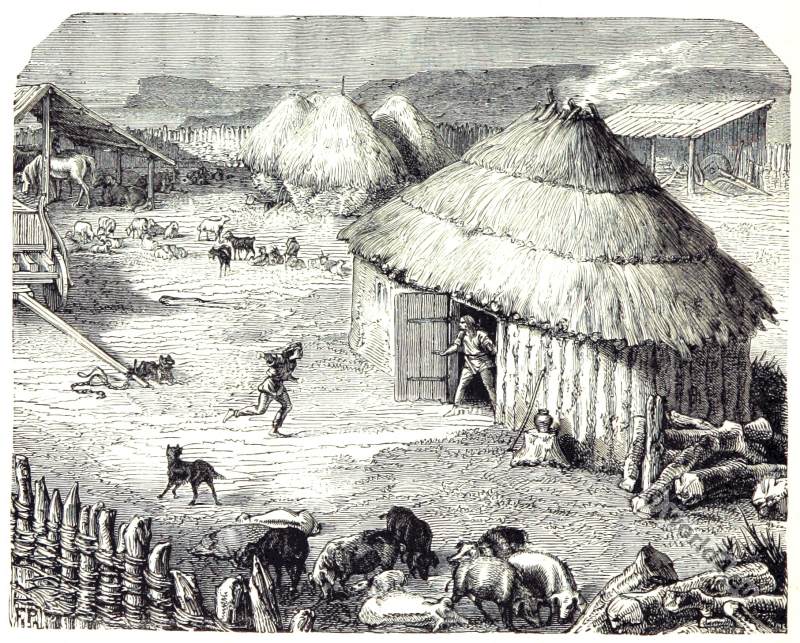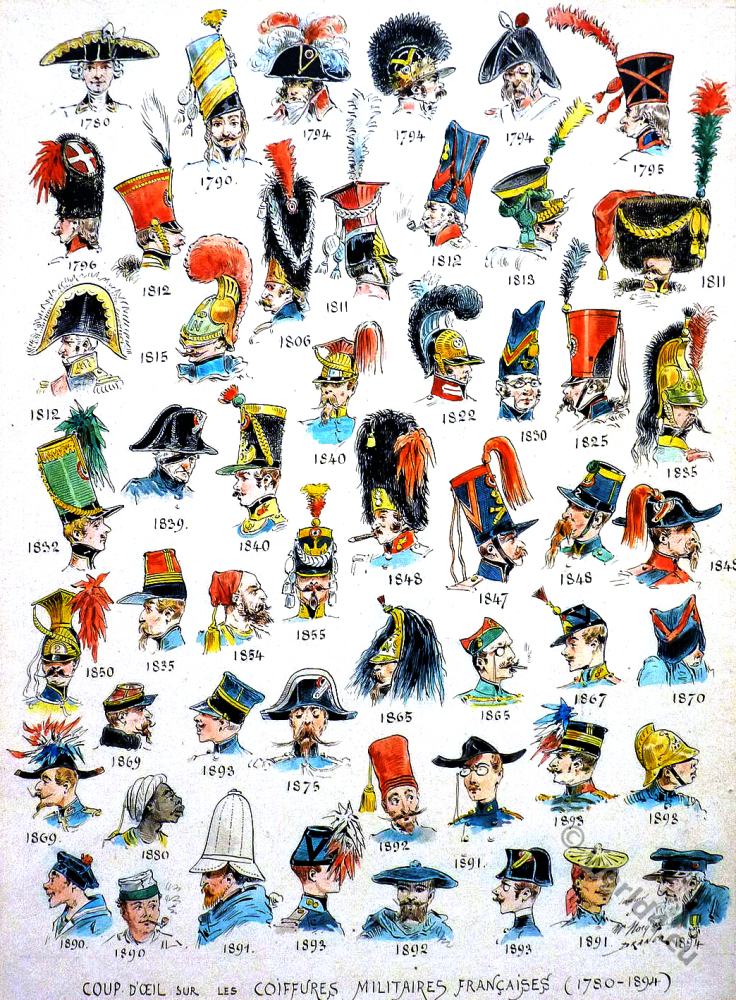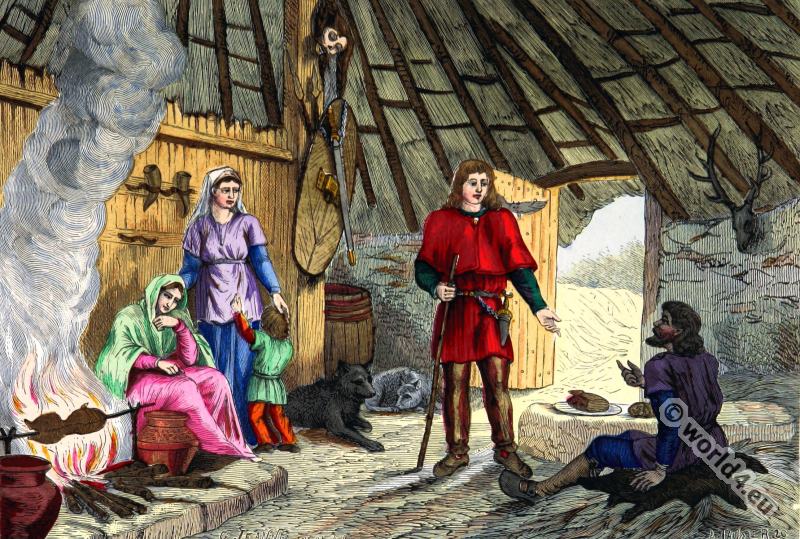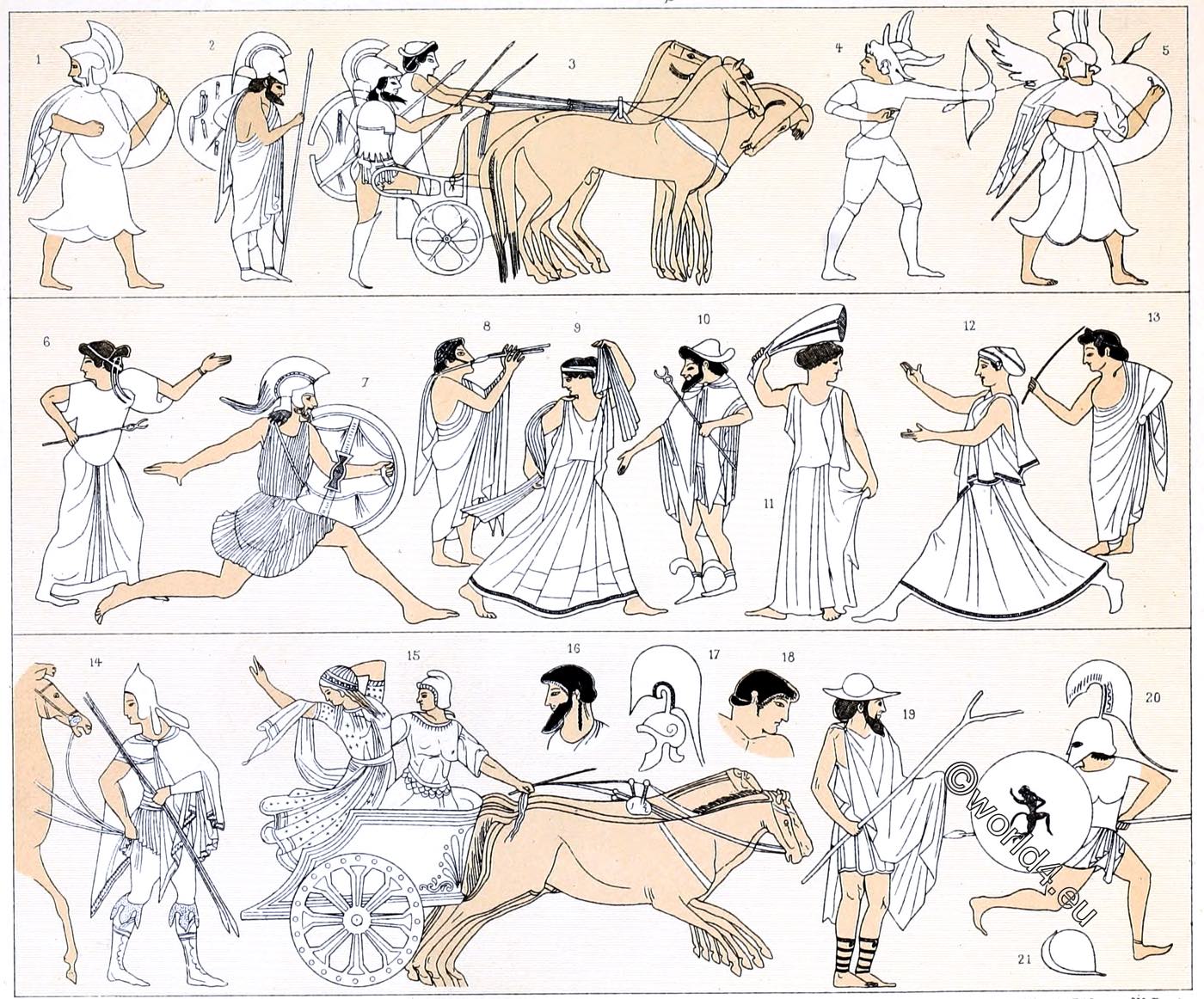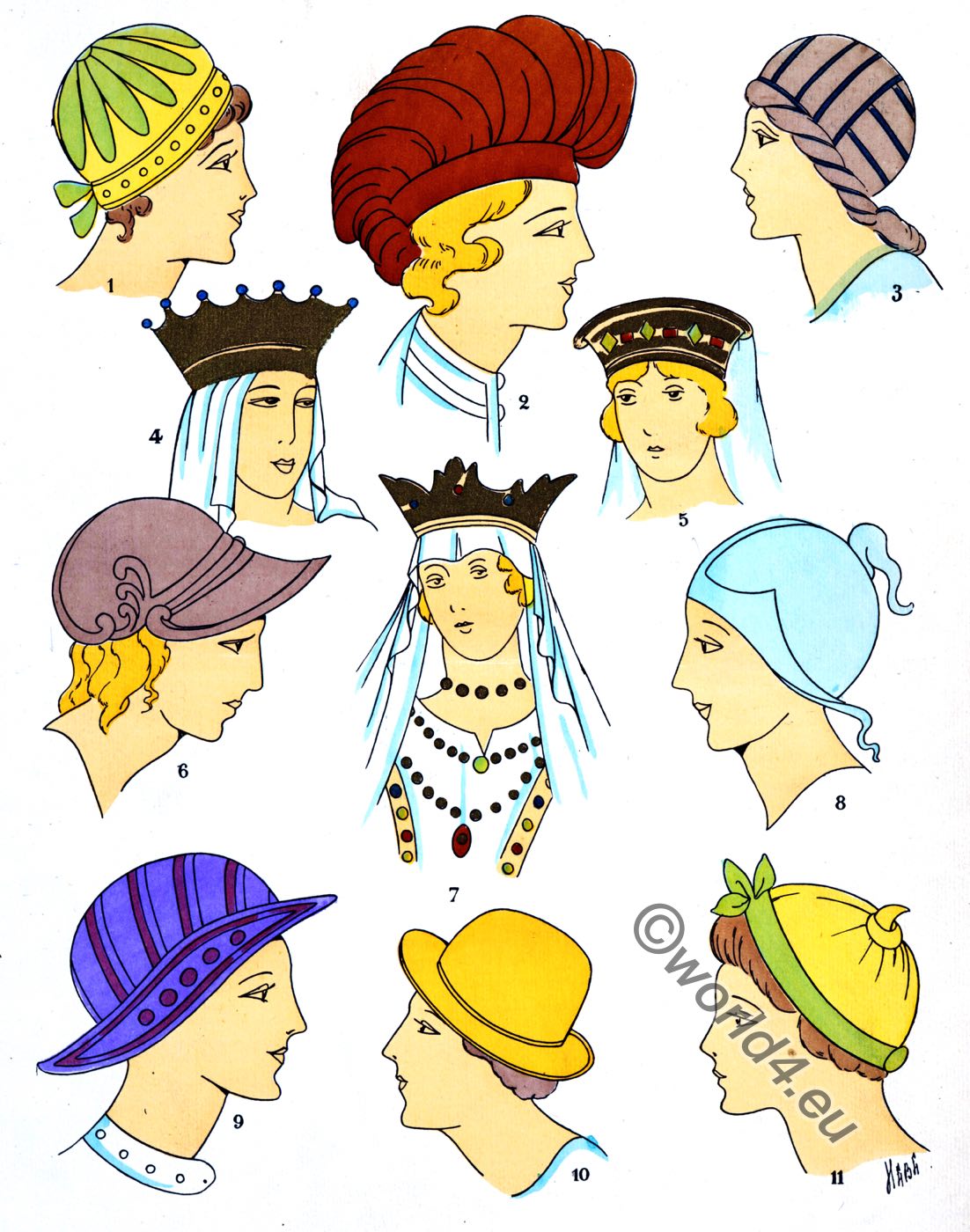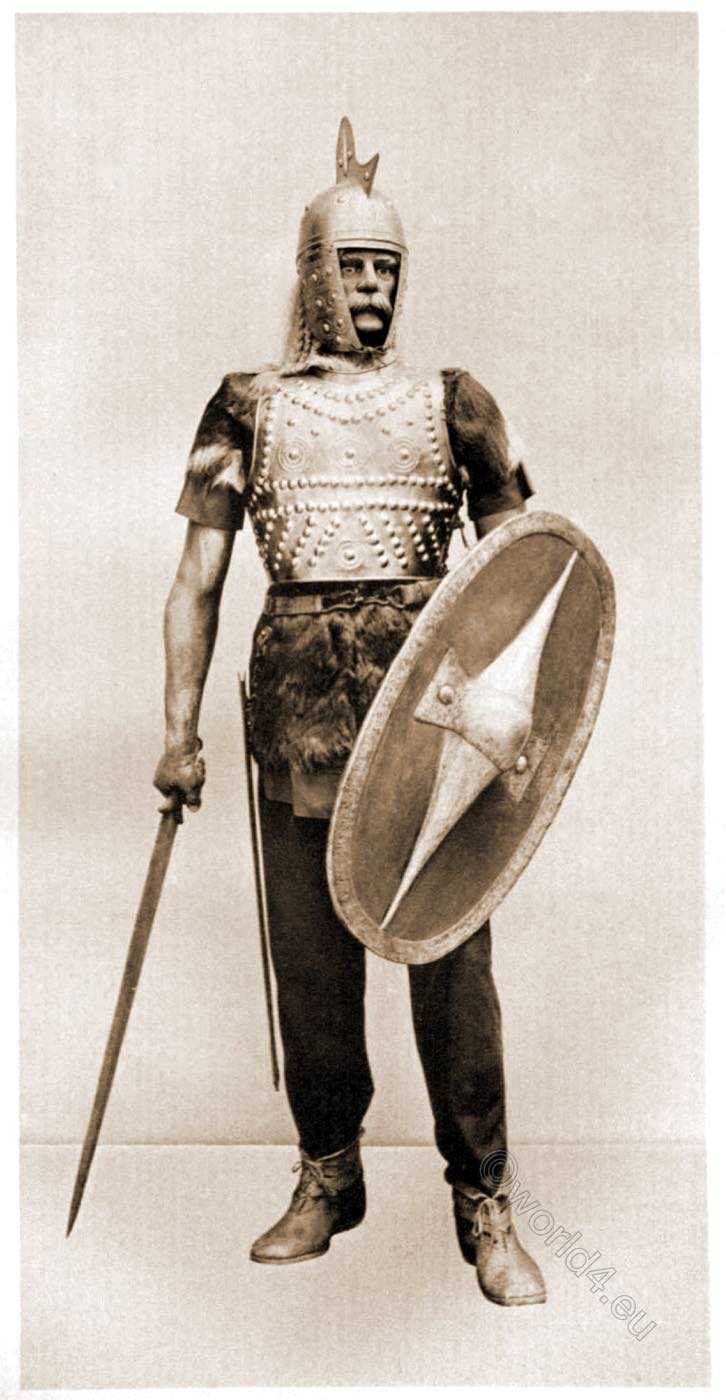Gallic and Gallo-Roman helmets.
1, 2. Horned helmets with wheel (Arc d’Orange, cast in the Museum of Saint Germain). 3. Horned helmet without wheel (Arc d’Orange,a cast in the Museum of Saint Germain). 4, 5, 6. Horned helmets from the tomb of the Julii at Saint Remys (cast in the Museum of Saint Germain, rooms b and c).”
These eccentric ornaments of Gallic helmets, mentioned by Diodorus (Biblioth. hist. liv. v.c. xxx.), and still to be seen in bas-reliefs, are not a mere freak of soldiers who wore them. Horns were, both in Gaul and the East, one of the attributes of command, one of the signs of divine or royal power according to the expression of Eusebius. The god Cernunnos, on the altar of Notre Dame Paris, has horns. The same is the case with the squatting divinity on the altar at Rheims.
The Celtic Cernunnos is considered a master of the animals, and as a companion of the great earth goddess. Caesar reported in his work, the so-called Gaul excursion De bello Gallico, the Gauls continued their lineage back to one night God whom he equates in interpretatio romana with the ancient Italian Dis Pater (Roman god of the underworld, later subsumed by Pluto or Hades). The most common representation of the God of antlers is the display on the Gundestrup Cauldron, found in Denmark in 1891. He is however called God of nature, the forest, the creative forces of nature, fertility, virility, growth, reincarnation, the cross-roads, the warrior as a God of love and a God of prosperity and wealth. It promotes vitality and fertility and embodies the sacredness of nature, the freedom of the wilderness and freedom of man as part of this wild nature. His later Germanic less well-known name is Freyr. The Druids called him Hu-gadarn. A deer (a horned) applies in many cultures of the world as a representative of the sun and light on earth – as a bringer of light.
Related:
Discover more from World4 Costume Culture History
Subscribe to get the latest posts sent to your email.


